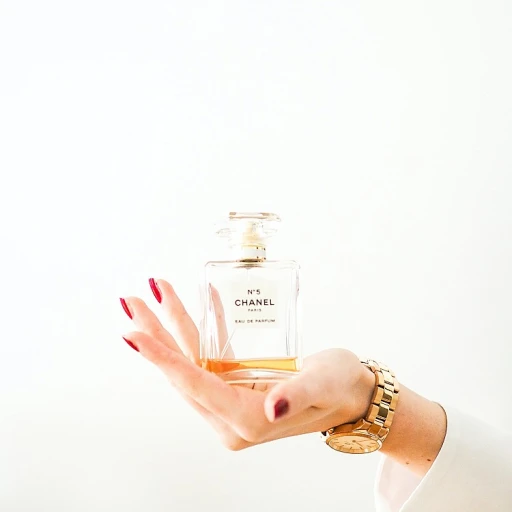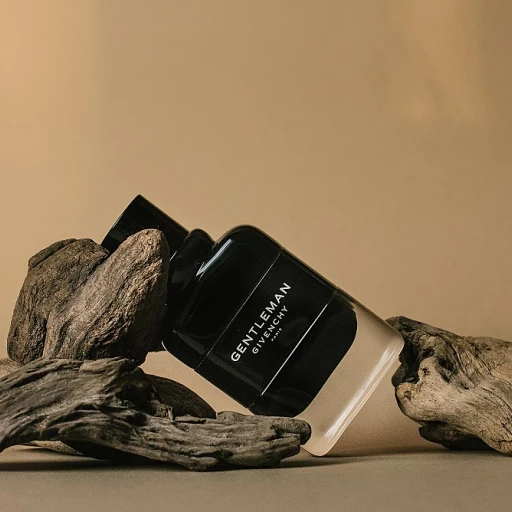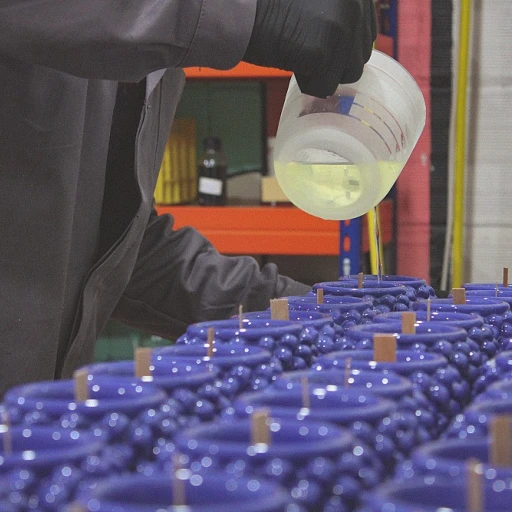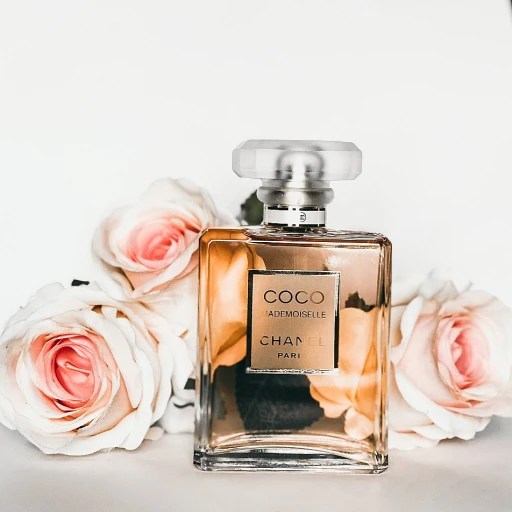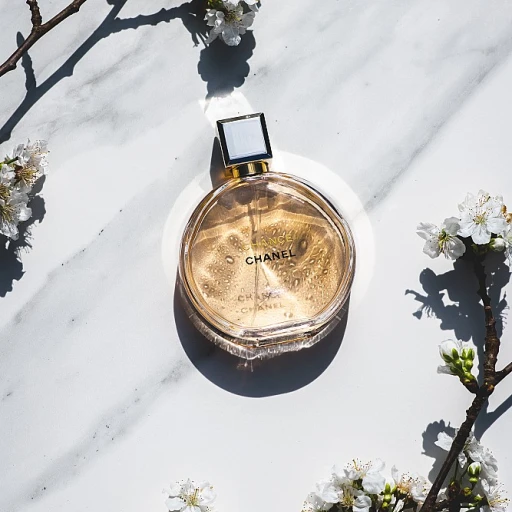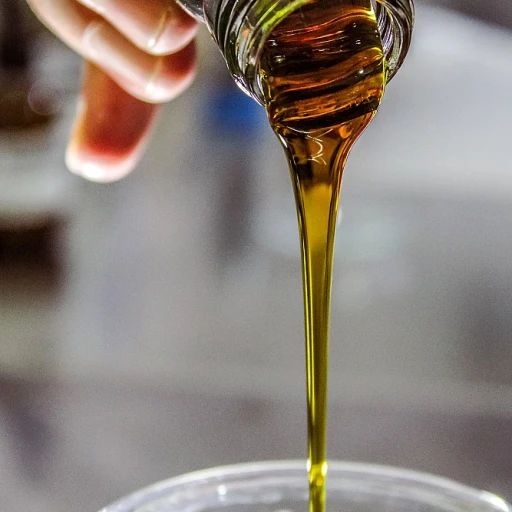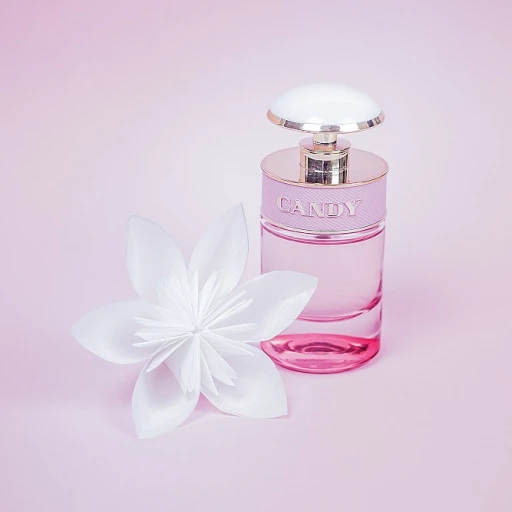
The evolution of the perfume perfume world
From ancient times to modern luxury
The journey of perfumes is nothing short of fascinating, traveling through eras and cultures to become an integral part of our daily lives. Let's dive into the evolution that has shaped the perfume perfume world.
Ancient beginnings
Perfumes date back to ancient Mesopotamia and Egypt around 4000 years ago, when scents were used for religious rituals and personal grooming. The Greeks and Romans perfected the craft, adding their flair by using myriad herbs and flowers. Cleopatra’s infamous perfumes, like her rose petal concoction, still influence modern fragrances today.
The middle ages and the renaissance
During the Middle Ages, the Persians took perfumery to new heights by refining distillation methods. Avicenna, a Persian polymath, introduced the technique of extracting oils from flowers through distillation. The Renaissance era saw Italy becoming a perfume epicenter, with Catherine de' Medici commissioning personal fragrances that wowed the French court, and Paris quickly embraced and enhanced perfumery.
Modern era
Fast forward to the late 19th and 20th centuries, perfumery exploded with industrial advancements. Synthetic compounds like vanillin and coumarin, discovered in the late 1800s, allowed perfumers to create scents previously unattainable. By the 1920s, Chanel No. 5 hit the market, embodying sophistication and becoming an iconic fragrance.
Current trends and developments
Today, the perfume perfume world is a blend of tradition and innovation. Luxury houses like understanding the allure of musk perfume and Dior continue to captivate with timeless classics, while niche brands are disrupting the market with unique blends and sustainable practices.
The future
With eco-conscious consumers driving demand for transparency and ethical practices, the future of perfumes looks beautifully green. Brands are adopting sustainable sourcing, and biotech companies are developing lab-grown ingredients to meet this shift without compromising on luxury.
The perfume perfumeworld has a rich history and an exciting future, seamlessly blending the old with the new. From ancient rituals to modern-day luxury, the evolution of perfumes is a testament to our enduring love for captivating scents.
Current trends in the perfume perfume world
A Breath of Fresh Scents: Fragrance Trends Shaping the Market
The perfume perfume world is always evolving, and 2023 has introduced some exciting trends that are captivating enthusiasts and casual users alike. According to a recent report by Statista, the global fragrance market reached $49 billion in sales in 2022, driven by both traditional eau de parfums and niche fragrances.
Popular ingredients and scents
One noticeable trend relates to ingredient transparency and clean fragrances. Consumers are becoming more conscious of what goes into their perfumes. An intriguing study by Cosmetics Design Europe revealed that 64% of European consumers prefer eco-labeled products. Brands are responding by incorporating natural and sustainably sourced ingredients, making scents like oud, sandalwood, and vetiver more prominent.
Customization and personalization
Customization is another trend that's making waves. Consumers are now more inclined towards bespoke fragrances tailored to their individual tastes. Platforms like Luckyscent offer personalized scent profiles, reflecting this increasing trend. In essence, it's a move away from generic mass-market perfumes to unique, personalized aromas that tell a story.
Gender-neutral scents on the rise
One significant shift is the rise of gender-neutral perfumes. Breaking away from the traditional categorization of men's and women's fragrances, brands like Calvin Klein and Gucci have introduced unisex lines that appeal to a broader audience. According to a report by The NPD Group, sales of unisex fragrances grew by 59% in 2022, indicating a significant shift in consumer preferences.
The rise of niche and artisanal brands
Niche and artisanal brands are gaining a foothold in the perfume perfume world. These brands emphasize handcrafted processes and unique scent combinations that stand out in the market. For instance, brands like Acqua di Parma and Byredo have successfully carved a niche by offering exclusive, high-quality perfumes. An industry analysis by Grand View Research indicates that the niche fragrance segment is expected to grow at a CAGR of 4.6% from 2021 to 2028.
High-tech and smart perfumes
Technology is also leaving its mark. Who could’ve imagined smart perfume bottles a decade ago? Brands like Scentinvent Technologies are pushing the boundaries with bottles that allow users to customize scents using an app. These innovations offer an interactive and engaging way for consumers to experience fragrances, setting a new trend in the market.
Expert insights: what makes a fragrance stand out?
Crafting a memorable scent: the art of blending
Creating a fragrance that truly stands out in the perfume world isn't just about mixing pleasant-smelling ingredients—it’s an art form. Perfume creators, known as ‘noses,’ undergo extensive training to fine-tune their sense of smell. Experts like Francis Kurkdjian, who formulated iconic scents for Burberry and Jean Paul Gaultier, emphasize the importance of balance and harmony in their creations. But what exactly makes a fragrance stand out? The magic lies in the blend of top, middle, and base notes. The top notes are the initial impressions. Think fresh citrus or a burst of floral elements. These are what you smell first, within the initial 15 minutes. Middle notes, or the heart of the perfume, start to come forward next. They can be spicy, floral, or even fruity, and they develop more body and complexity. Finally, the base notes provide the lasting impression, lingering for hours. Sandalwood, musk, and vanilla are classic examples. The interplay of these layers can create a harmonious, memorable scent. A great blend also often includes what’s known as a ‘signature note.’ This is an ingredient or a combination that gives the fragrance its unique fingerprint. For instance, Tom Ford's Black Orchid is renowned for its rich blend of dark floral and chocolate notes. This signature hook keeps people remembering and returning to the scent. Essentially, it comes down to both the science and artistry of olfactive memory—triggering emotions and memories through scent. For a deeper exploration of these awe-inspiring blends, you can discover more on the art of fragrance creation with a mini perfume set.The role of raw materials
The quality of the raw materials used in a fragrance also plays a huge role in its distinctiveness. The world-renowned brand Chanel has established direct partnerships with flower growers in Grasse, France, to ensure they get the highest quality blooms for their perfumes. Similarly, oud wood, known for its intense, earthy aroma, is a prized ingredient in many luxury fragrances but comes with its own set of challenges. It’s rare and often sourced from endangered trees. Synthetic materials have revolutionized the perfume industry, offering more stable and sometimes more ethical options. However, natural extracts are often seen as superior due to their complex, multi-faceted scent profiles. The debate between natural versus synthetic scents also adds to the allure and controversy surrounding many high-end perfumes. The integrity of a fragrance is closely tied to the purity and source of its raw materials. Natural essences like jasmine, rose, and sandalwood can vary significantly in quality, which can affect the final blend. Esteemed noses often work closely with harvesters to select only the best quality ingredients for their masterpieces, ensuring each bottle offers a consistent and exceptional experience. This dedication to source quality is one of the many reasons why luxury perfumes command such high prices and admiration.Men's fragrances: top picks and reviews
Men's fragrances that stand out
In the heart of the perfume perfume world, men's fragrances hold a unique spot with certain classics and new trends making waves. Calvin Klein, for example, offers an array of fragrances that cater to various tastes, from the fresh and invigorating CK One to the sophisticated Calvin Klein Euphoria Men.
Gucci: a mix of tradition and modernity
Gucci has been a significant player in the fragrance market for decades. Their Gucci Guilty line, with both its original and subsequent iterations, remains a fan favorite. Gucci's use of rich, bold scents is often highlighted in reviews regular by consumers who appraise it for its long-lasting qualities and unique blend of notes.
Edp perfumes and colognes
Eau de parfum (EDP) is a popular choice among men who prefer a stronger scent that lasts longer. Brands like Baccarat Rouge and Black Orchid often top the charts for eau parfum men reviews. These fragrances blend luxury and durability, perfect for those who want their scent to linger throughout the day.
Brown orchid and barakkat: the niche allure
Niche perfumes such as Brown Orchid and Barakkat have been praised for their distinctiveness and uniqueness. For instance, the world brown orchid collection offers an array of exotic notes, making it a standout among men's fragrances. Similarly, the fragrance world barakkat line has garnered a lot of attention for its luxurious and appealing scent profiles.
Trends and insights in men's fragrances
The trends in the men's fragrance market show an increasing preference for edp unisex perfume, reflecting a shift towards more versatile and gender-neutral scents. This change is evident in the popularity of fragrances like Gucci Mémoire d'une Odeur, which blends traditional masculine and feminine notes.
According to a report from Grand View Research, the global men's fragrance market is expected to reach $28 billion by 2025, highlighting the growing demand and evolution in this segment (source).
Experts' take on men's fragrances
Experts suggest that a standout fragrance for men is often one that balances intensity with subtlety. Perfumer Harry Fremont notes, "A great men's fragrance should be memorable yet understated, allowing the individual’s personality to shine through." This sentiment is reflected in the success of brands like Calvin Klein and Gucci, which combine rich, complex notes with a timeless approach.
Women's fragrances: top picks and reviews
Top-rated perfumes for today's women
When it comes to capturing the essence of femininity, the perfume industry leaves no stone unturned. With a plethora of options ranging from floral to musky, these scents are crafted to match the evolving tastes of modern women. Let's explore some top-rated picks and reviews in the world of women's perfumes.
Chanel no. 5 eau de parfum
Chanel No. 5 has long been considered an iconic aroma. Since its creation nearly a century ago, it continues to captivate the hearts of women around the globe. According to a report by Euromonitor, Chanel saw annual sales of 1.5 million units of this timeless fragrance in 2022.
The perfume boasts a harmonious blend of aldehydes, ylang-ylang, neroli, and vanilla, making it a favorite for those seeking sophistication in a bottle.
La vie est belle by lancôme
Voted one of the most popular fragrances in 2021 according to Fragrantica, La Vie Est Belle by Lancôme continues to sell like hotcakes. The perfume, featuring notes of black currant, praline, tonka bean, and vanilla, promises a long-lasting olfactory experience.
Users consistently rave about its ability to maintain its aroma throughout the day. Maria Garcia, a frequent reviewer on Fragrantica, shared, "This fragrance makes me feel special; it accompanies me like a sweet aura during my entire day.”
Calvin klein eternity for women
For those who prefer a more classic fragrance, Calvin Klein Eternity offers an irresistible choice. Garnering high praise and regular sales, it's no wonder this perfume remains a staple. With light notes of freesia, lily, and sandalwood, it delivers a crisp scent that's neither too overwhelming nor too understated.
According to market research firm Mintel, Calvin Klein experienced a notable resurgence in revenue with the introduction of a limited-edition scent in the Eternity line, boosting company profits by 4% in Q1 2023.
Baccarat rouge 540 extrait de parfum
Considered the epitome of luxury, Baccarat Rouge 540 Extrait maintains a strong following. Market analysts from NPD Group indicate that this perfume has become one of the top-sold luxury perfumes, with an impressive growth rate of 7% annually.
Its delicate blend of jasmine, saffron, ambergris, and cedarwood creates a unique and opulent scent profile that women find hard to resist.
"Every spritz feels like wrapping myself in liquid gold," says Emma Thompson, a reviewer on Sephora.
Gucci bloom
Lastly, Gucci Bloom brings a fresh, floral sensation to every woman's vanity. The fragrance blends natural tuberose and jasmine for a light yet captivating aroma. This perfume often receives glowing reviews in magazines and online platforms alike.
According to a 2022 study by Statista, Gucci Bloom's unique scent combinations have contributed to a sales increase of 10% over the previous year.
In essence, these selections underline the diverse preferences and discerning tastes of women around the globe, enriching the perfume perfume world.
The science behind long-lasting fragrances
Understanding the chemistry of longevity
In the perfume perfume world, not all fragrances are created equal. One major distinction? How long they last. Eau de toilette and Eau de parfum might sound similar, but trust me, they’re worlds apart in terms of staying power, thanks to their chemical compositions. Let's break it down.
Concentration matters more than you think
You’ve probably seen terms like EDP (Eau de Parfum) and EDT (Eau de Toilette) thrown around. But do you know what they really mean? Eau de parfum typically contains 15-20% aromatic compounds, making it more potent and longer-lasting compared to Eau de toilette, which has about 5-15%. Sources like FragranceX confirm that EDP can linger for 4-6 hours, whereas EDT generally lasts for about 2-4 hours.
Key ingredients for long-lasting scents
Perfume chemists, like Pierre Bourdon, emphasize the importance of base notes in ensuring longevity. These are usually richer, heavier molecules versus the lighter top notes. Oud, amber, and sandalwood are exemplary base notes known for their endurance. For instance, Gucci’s Oud eventail parfum and Tom Ford’s Black Orchid are often lauded in reviews regular price for their long-lasting attributes, as these base notes slow down evaporation, creating a more persistent scent.
Fixatives: The unsung heroes
Fixatives are another critical aspect. According to a study by the International Journal of Cosmetic Science, fixatives like diethyl phthalate can drastically enhance a perfume’s staying power by slowing down the evaporation of more volatile ingredients. However, the use of synthetic fixatives has stirred some controversies in the perfume perfume world, especially regarding their potential health impacts.
Application techniques: Optimizing your eau parfum fragrance
You might already be shopping for the perfect parfum fragrance world, but consider how you apply it. Dabbing perfume on pulse points, as suggested by countless experts, maximizes warmth and circulation. Additionally, moisturized skin holds scent longer, so applying unscented lotion beforehand can make a noticeable difference. After your purchase, quick view guides often recommend techniques to ensure your parfum men or perfume fragrance world lasts throughout the day.
A closer look at niche brands
In the grand scheme of fragrance world brown orchid and globally-renowned brands, niche perfumes often enjoy a reputation for longevity. Brands like Montale and Creed, noteworthy in the fragrance world oud segment, employ high concentrations of natural ingredients—often resulting in longer-lasting scents. According to a 2021 report by MarketResearch Future, the success of these brands underscores consumer preferences for high-quality, enduring fragrances.
Case study: the success of niche perfume brands
The rise of niche perfume brands: a case study
In recent years, niche perfume brands have been carving out a unique space in the perfume perfume world. Unlike their mainstream counterparts, these brands prioritize quality, creativity, and exclusivity over mass appeal. With their unique formulations and limited productions, they often create scents that tell a story or evoke specific emotions. This trend has resonated deeply with modern consumers seeking an alternative to the heavily marketed fragrances found in department stores.
One strong example of a niche perfume brand's success is Byredo. Founded in 2006 by Ben Gorham, Byredo has quickly become a favorite among fragrance enthusiasts. Gorham's unique approach to perfumery, blending art with science, has seen the brand's fragrances praised for their originality and longevity. Byredo's success is evident in its annual growth, with a reported 15% increase in revenue year-over-year (source: Euromonitor International).
Another compelling case is Maison Francis Kurkdjian. Since its inception in 2009, this house has been synonymous with luxury and sophistication. Its flagship fragrance, Baccarat Rouge 540, has garnered a cult-like following. According to a 2021 report by NPD Group, Baccarat Rouge 540 saw a 25% increase in sales, underscoring the growing appetite for niche fragrances.
How niche brands are setting trends
Niche brands are not just following trends; they are setting them. Take, for instance, the trend of unisex scents. Fragrance brands like Byredo and Le Labo have made it their mission to break down the gender barriers in perfumery, creating scents that appeal to both men and women. This has resulted in a 30% increase in the sale of unisex fragrances over the past five years (source: Statista).
Moreover, the emphasis on ethical and sustainable practices has given niche brands an edge. Brands like Diptyque and L'Artisan Parfumeur are leading the way by sourcing natural ingredients and adopting environmentally friendly packaging. A report by Mintel highlights that 57% of consumers are willing to pay more for sustainably produced perfumes, reinforcing the importance of this trend.
Challenges and controversies
The rise of niche perfume brands is not without its challenges. The high cost of natural ingredients and small-scale production often results in higher prices, which can be prohibitive for some consumers. However, the trade-off for quality and exclusivity often justifies the premium price for many fragrance aficionados.
Additionally, the market is becoming increasingly saturated. With new niche brands emerging regularly, maintaining a unique identity and standing out can be difficult. Despite these challenges, the success stories of brands like Byredo, Maison Francis Kurkdjian, and Diptyque demonstrate that there is a thriving market for creative and unique fragrances, provided they adhere to high standards and resonate with their audience.
Controversies and challenges in the perfume perfume world
Pricing transparency issues
The perfume perfume world is often criticized for its elusive pricing structures. While some claim that the cost of materials justifies the high price tags, others argue that branding and marketing significantly inflate prices. According to a report by Euromonitor, branding costs can account for up to 50% of the final retail price. This lack of transparency can make it challenging for consumers to discern the true value of a fragrance.
Environmental concerns
Many brands in the fragrance industry are facing scrutiny over their environmental practices. The use of certain synthetic ingredients and unsustainable farming practices for natural ingredients have been called into question. For instance, a 2022 report by Greenpeace highlighted that some brands still use non-renewable resources and contribute to deforestation. Companies like Calvin Klein and Gucci have been taking steps to address these issues by focusing on sustainable sourcing and reducing carbon footprints.
Animal testing
Animal rights organizations continue to criticize perfume brands for testing their products on animals. Although laws like the European Union’s Cosmetics Regulation have led to a ban on animal testing, loopholes still allow some companies to circumvent these regulations. A survey by Cruelty-Free International found that 30% of major brands still engage in animal testing in markets where it is legally required. This ongoing controversy affects the reputation and trustworthiness of many perfume lines, forcing them to choose between market access and ethical practices.
Celebrity endorsements and authenticity
Celebrity-endorsed fragrances can be a double-edged sword. While they often bring in significant sales, there's skepticism about authenticity. According to a study by Mintel, perfumes endorsed by celebrities have a failure rate of 60% compared to those that do not. This trend raises questions about the authenticity and quality of these products, making consumers wary of falling for marketing gimmicks.
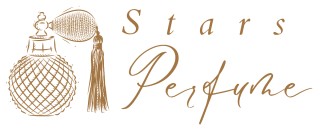
-large-full.webp)
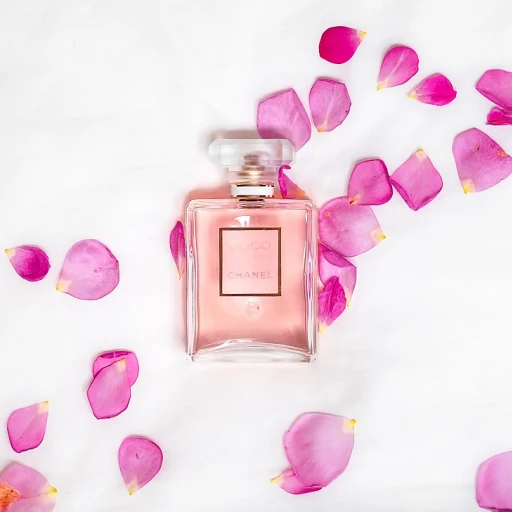
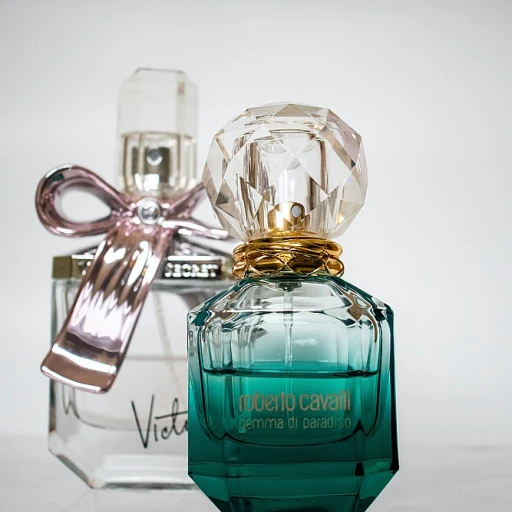
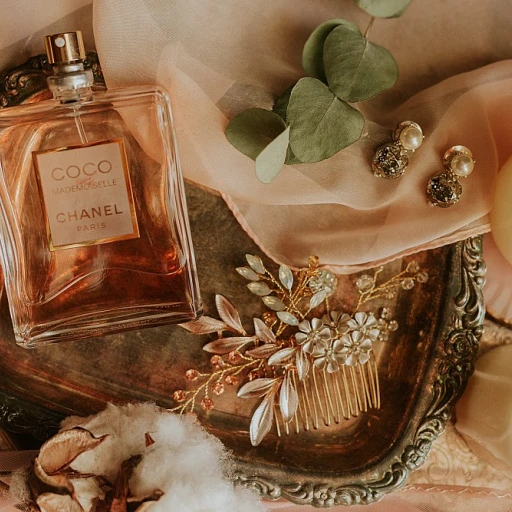
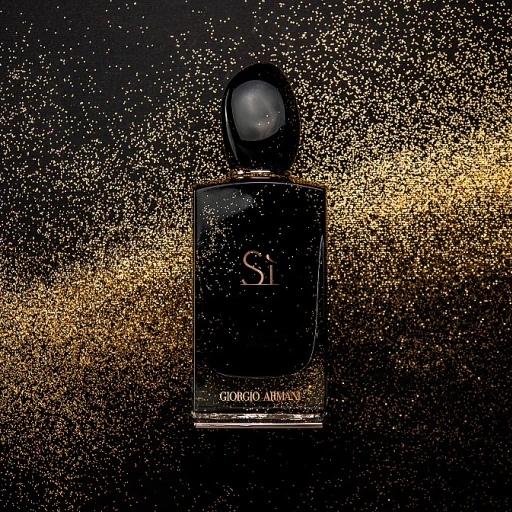
-large-teaser.webp)
